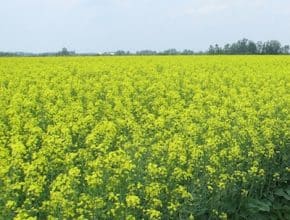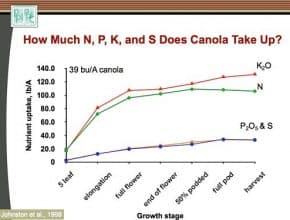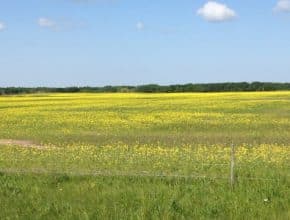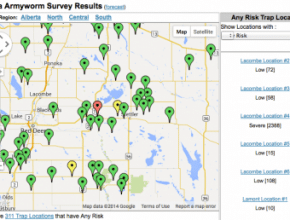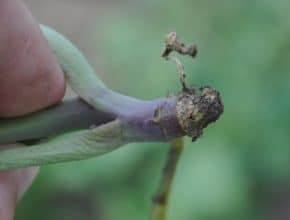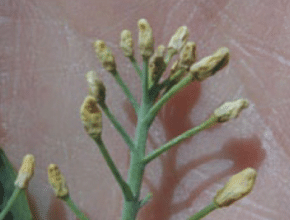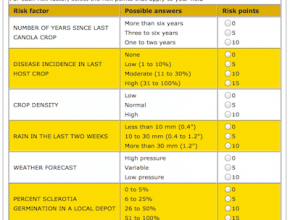The risk of sclerotinia stem rot infection is still present on later crops that have not reached full flower, especially given the rain and high humidity in some regions this week. Highly variable crops may also be at “full flower” or their “most yellow” — other terms for 50% flower — for longer than typically expected, which also extends the…
Canola Watch Posts
-
-
Sulphur and nitrogen deficiencies are showing up in some canola crops. The crop may not have received enough fertilizer to begin with, especially if this year’s rates did not compensate for high yields and high removal last year. Excess moisture may have added to nutrient losses. Flowering is not an ideal time to top dress, and applications any time after…
-
Diagnosis: Ugly. A lot of canola crops are looking pretty sad, with small plants, low counts and a wide range of stages. This makes for difficult management decisions, including when to spray for sclerotinia stem rot — or whether to spray at all. Late fungicide. The application window for fungicide to manage sclerotinia stem rot closes at 50% flower (or…
-
How well can you identify the causes of canola root damage? We have six photos for you, including the one above…
-
-
-
-
-
Hot, dry conditions the past number of days and variable field staging have made the decision to spray fungicide to manage sclerotinia stem rot even more difficult this year. Moisture is the key risk factor for sclerotinia stem rot. Without moisture before, during and after flowering, disease severity and the return on investment from fungicide will be lower than if…

